DNAzyme-Amplified Label-Free Biosensor for the Simple and Sensitive Detection of Pyrophosphatase
Abstract
:1. Introduction
2. Materials and Methods
2.1. Chemicals and Reagents
2.2. Apparatus
2.3. DNAzyme-Based Biosensor
2.4. Detection of Ppase Activity
3. Results and Discussion
3.1. Characterization of the DNAzyme and Its Substrate
3.2. Optimization of the Biosensor
3.3. Sensitivity and Recovery of the DNAzyme-Based PPase Biosensor
4. Conclusions
Supplementary Materials
Author Contributions
Funding
Institutional Review Board Statement
Informed Consent Statement
Acknowledgments
Conflicts of Interest
References
- Deng, J.; Jiang, Q.; Wang, Y.; Yang, L.; Yu, P.; Mao, L. Real-Time Colorimetric Assay of Inorganic Pyrophosphatase Activity Based on Reversibly Competitive Coordination of Cu2+ between Cysteine and Pyrophosphate Ion. Anal. Chem. 2013, 85, 9409–9415. [Google Scholar] [CrossRef]
- Sun, J.; Yang, F.; Zhao, D.; Yang, X. Highly Sensitive Real-Time Assay of Inorganic Pyrophosphatase Activity Based on the Fluorescent Gold Nanoclusters. Anal. Chem. 2014, 86, 7883–7889. [Google Scholar] [CrossRef]
- Yang, Y.; Cai, J.; Yin, J.; Wang, D.; Bai, Z.; Zhang, J.; Wang, K.; Yu, G.; Zhang, Z. Inorganic pyrophosphatase (PPA1) is a negative prognostic marker for human gastric cancer. Int. J. Clin. Exp. Pathol. 2015, 8, 12482–12490. [Google Scholar] [PubMed]
- Wang, Y.; Wu, Y.; Liu, W.; Chu, L.; Liao, Z.; Guo, W.; Liu, G.-Q.; He, X.; Wang, K. Electrochemical strategy for pyrophosphatase detection Based on the peroxidase-like activity of G-quadruplex-Cu2+ DNAzyme. Talanta 2018, 178, 491–497. [Google Scholar] [CrossRef]
- Lee, Y.; Yoo, S.; Kang, S.; Hong, S.; Han, M.S. An [Mn2(bpmp)]3+ complex as an artificial peroxidase and its applications in colorimetric pyrophosphate sensing and cascade-type pyrophosphatase assay. Analyst 2018, 143, 1780–1785. [Google Scholar] [CrossRef]
- Zhang, Y.; Guo, Y.; Zhao, M.; Lin, C.; Lin, Z.; Luo, F.; Chen, G. Fluorescence biosensor for inorganic pyrophosphatase activity. Anal. Bioanal. Chem. 2017, 409, 999–1005. [Google Scholar] [CrossRef]
- Lee, N.K.; Koh, H.R.; Han, K.Y.; Kim, S.K. Folding of 8-17 Deoxyribozyme Studied by Three-Color Alternating-Laser Excitation of Single Molecules. J. Am. Chem. Soc. 2007, 129, 15526–15534. [Google Scholar] [CrossRef]
- Zhou, W.; Chen, Q.; Huang, P.-J.J.; Ding, J.; Liu, J. DNAzyme Hybridization, Cleavage, Degradation, and Sensing in Undiluted Human Blood Serum. Anal. Chem. 2015, 87, 4001–4007. [Google Scholar] [CrossRef] [PubMed] [Green Version]
- Gao, X.; Huang, H.; Niu, S.; Ye, H.; Lin, Z.; Qiu, B.; Chen, G. Determination of magnesium ion in serum samples by a DNAzyme-based electrochemical biosensor. Anal. Methods 2012, 4, 947–952. [Google Scholar] [CrossRef]
- Liu, J.; Lu, Y. A DNAzyme Catalytic Beacon Sensor for Paramagnetic Cu2+ Ions in Aqueous Solution with High Sensitivity and Selectivity. J. Am. Chem. Soc. 2007, 129, 9838–9839. [Google Scholar] [CrossRef] [PubMed]
- Zuo, P.; Yin, B.-C.; Ye, B.-C. DNAzyme-based microarray for highly sensitive determination of metal ions. Biosens. Bioelectron. 2009, 25, 935–939. [Google Scholar] [CrossRef] [PubMed]
- Zhao, X.-H.; Kong, R.-M.; Zhang, X.-B.; Meng, H.-M.; Liu, W.-N.; Tan, W.; Shen, G.-L.; Yu, R.-Q. Graphene–DNAzyme Based Biosensor for Amplified Fluorescence “Turn-On” Detection of Pb2+ with a High Selectivity. Anal. Chem. 2011, 83, 5062–5066. [Google Scholar] [CrossRef]
- Skotadis, E.; Tsekenis, G.; Chatzipetrou, M.; Patsiouras, L.; Madianos, L.; Bousoulas, P.; Zergioti, I.; Tsoukalas, D. Heavy metal ion detection using DNAzyme-modified platinum nanoparticle networks. Sens. Actuators B Chem. 2017, 239, 962–969. [Google Scholar] [CrossRef]
- Silverman, S.K. In vitro selection, characterization, and application of deoxyribozymes that cleave RNA. Nucleic Acids Res. 2005, 33, 6151–6163. [Google Scholar] [CrossRef] [PubMed] [Green Version]
- Chen, Z.L.; He, Q.; Zhao, M.M.; Lin, C.Y.; Luo, F.; Lin, Z.Y.; Chen, G.N. A fluorometric histidine biosensor based on the use of a quencher-labeled Cu(II)-dependent DNAzyme. Microchim. Acta 2017, 184, 4015–4020. [Google Scholar] [CrossRef]
- Bidar, N.; Amini, M.; Oroojalian, F.; Baradaran, B.; Hosseini, S.S.; Shahbazi, M.A.; Hashemzaei, M.; Mokhtarzadeh, A.; Hamblin, M.R.; de la Guardia, M. Molecular beacon strategies for sensing purpose. TrAC-Trends Anal. Chem. 2021, 134, 116143. [Google Scholar] [CrossRef]
- Wang, K.M.; Tang, Z.W.; Yang, C.Y.J.; Kim, Y.M.; Fang, X.H.; Li, W.; Wu, Y.R.; Medley, C.D.; Cao, Z.H.; Li, J.; et al. Molecular Engineering of DNA: Molecular Beacons. Angew. Chem. 2009, 48, 856–870. [Google Scholar] [CrossRef] [Green Version]
- Orenstein, A.; Berlyoung, A.S.; Rastede, E.E.; Pham, H.H.; Fouquerel, E.; Murphy, C.T.; Leibowitz, B.J.; Yu, J.; Srivastava, T.; Armitage, B.A.; et al. PNA FRET Pair Miniprobes for Quantitative Fluorescent In Situ Hybridization to Telomeric DNA in Cells and Tissue. Molecules 2017, 22, 2117. [Google Scholar] [CrossRef] [PubMed] [Green Version]
- Karimi, M.A.; Dadmehr, M.; Hosseini, M.; Korouzhdehi, B.; Oroojalian, F. Sensitive detection of methylated DNA and methyltransferase activity based on the lighting up of FAM-labeled DNA quenched fluorescence by gold nanoparticles. RSC Adv. 2019, 9, 12063–12069. [Google Scholar] [CrossRef] [Green Version]
- Lee, J.; Samson, A.A.S.; Yim, Y.; Kim, S.-Y.; Jeon, N.L.; Min, D.-H.; Song, J.M. A FRET assay for the quantitation of inhibitors of exonuclease EcoRV by using parchment paper inkjet-printed with graphene oxide and FAM-labelled DNA. Microchim. Acta 2019, 186, 211. [Google Scholar] [CrossRef] [PubMed]
- Ge, J.; Dong, Z.-Z.; Bai, D.-M.; Zhang, L.; Hu, Y.-L.; Ji, D.-Y.; Li, Z.-H. A novel label-free fluorescent molecular beacon for the detection of 3′–5′ exonuclease enzymatic activity using DNA-templated copper nanoclusters. New J. Chem. 2017, 41, 9718–9723. [Google Scholar] [CrossRef]
- Wang, R.; Wang, L.; Xu, X.; Jiang, W. An enzyme-free and label-free fluorescence biosensor for microRNA detection based on cascade amplification of DNAzyme-powered three-dimensional DNA walker and hybridization chain reaction. Sens. Actuators B Chem. 2018, 268, 287–292. [Google Scholar] [CrossRef]
- Zhang, X.; Jin, Y.; Li, B. Copper nanocluster as a fluorescent indicator for label-free and sensitive detection of DNA hybridization assisted with a cascade isothermal exponential amplification reaction. New J. Chem. 2018, 42, 5178–5184. [Google Scholar] [CrossRef]
- Zhou, H.; Wu, Z.-F.; Han, Q.-J.; Zhong, H.-M.; Peng, J.-B.; Li, X.; Fan, X.-L. Stable and Label-Free Fluorescent Probe Based on G-triplex DNA and Thioflavin T. Anal. Chem. 2018, 90, 3220–3226. [Google Scholar] [CrossRef]
- Lee, C.-Y.; Liao, C.-H.; Tso, J.-T.; Hsieh, Y.-Z. A pyrophosphatase biosensor with photocurrent analysis. Sens. Actuators B Chem. 2019, 284, 159–163. [Google Scholar] [CrossRef]
- Kotera, N.; Poyer, F.; Granzhan, A.; Teulade-Fichou, M.-P. Efficient inhibition of human AP endonuclease 1 (APE1) via substrate masking by abasic site-binding macrocyclic ligands. Chem. Commun. 2015, 51, 15948–15951. [Google Scholar] [CrossRef]
- Xu, Z.; Sato, Y.; Nishizawa, S.; Teramae, N. Signal-Off and Signal-On Design for a Label-Free Aptasensor Based on Target-Induced Self-Assembly and Abasic-Site-Binding Ligands. Chem. Eur. J. 2009, 15, 10375–10378. [Google Scholar] [CrossRef]
- Carmi, N.; Balkhi, S.R.; Breaker, R.R. Cleaving DNA with DNA. Proc. Natl. Acad. Sci. USA 1998, 95, 2233–2237. [Google Scholar] [CrossRef] [Green Version]
- Xu, Z.; Morita, K.; Sato, Y.; Dai, Q.; Nishizawa, S.; Teramae, N. Label-free aptamer-based sensor using abasic site-containing DNA and a nucleobase-specific fluorescent ligand. Chem. Commun. 2009, 6445–6447. Available online: https://pubs.rsc.org/en/content/articlelanding/2009/cc/b908345f/unauth (accessed on 24 October 2021).
- Xiang, Y.; Tong, A.; Lu, Y. Abasic Site-Containing DNAzyme and Aptamer for Label-Free Fluorescent Detection of Pb2+ and Adenosine with High Sensitivity, Selectivity, and Tunable Dynamic Range. J. Am. Chem. Soc. 2009, 131, 15352–15357. [Google Scholar] [CrossRef] [PubMed] [Green Version]
- Zhu, L.; Zhang, J.; Wang, F.; Wang, Y.; Lu, L.; Feng, C.; Xu, Z.; Zhang, W. Selective amyloid β oligomer assay based on abasic site-containing molecular beacon and enzyme-free amplification. Biosens. Bioelectron. 2016, 78, 206–212. [Google Scholar] [CrossRef]
- Sato, Y.; Nishizawa, S.; Teramae, N. Label-Free Molecular Beacon System Based on DNAs Containing Abasic Sites and Fluorescent Ligands That Bind Abasic Sites. Chem. Eur. J. 2011, 17, 11650–11656. [Google Scholar] [CrossRef] [PubMed]
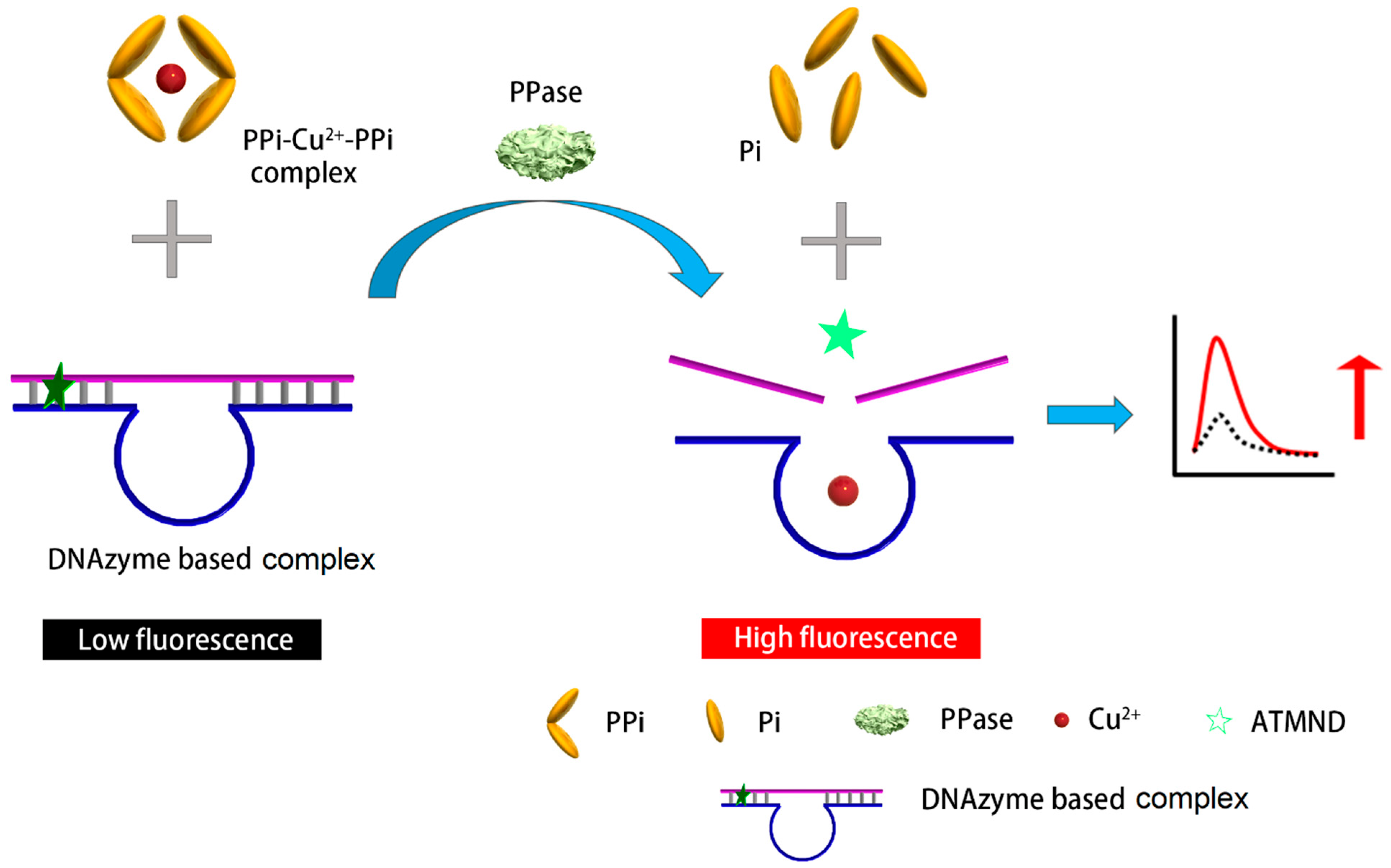
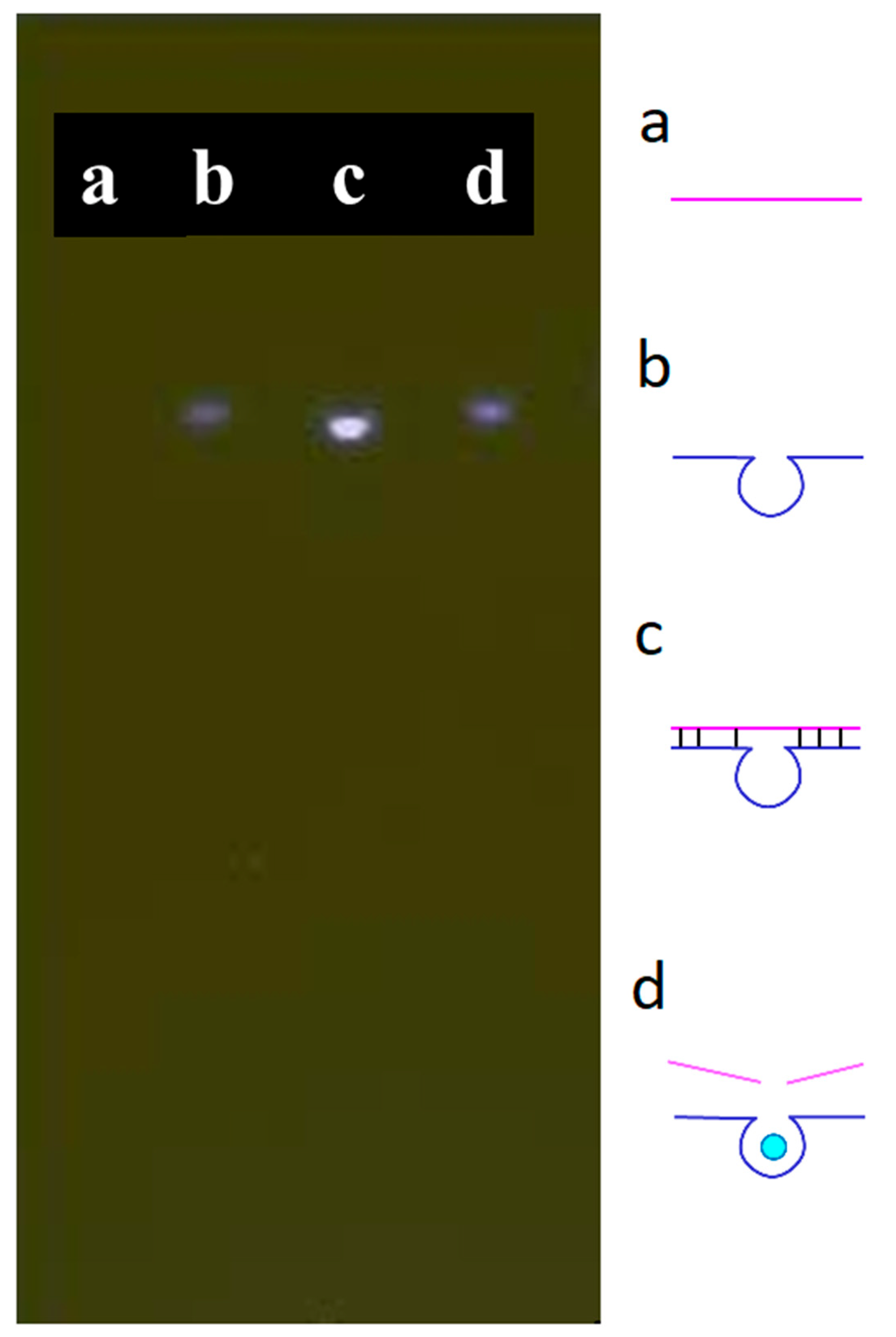

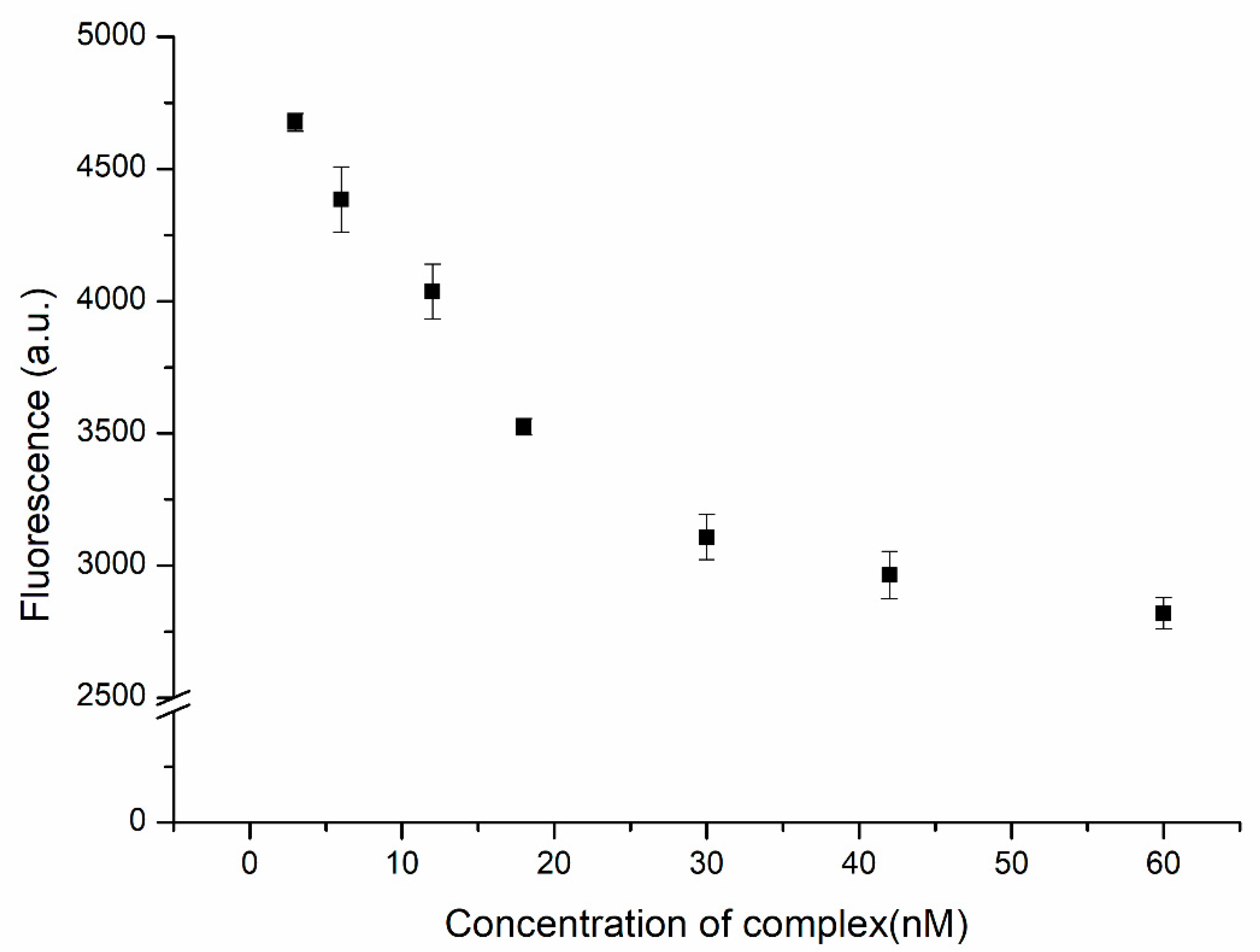
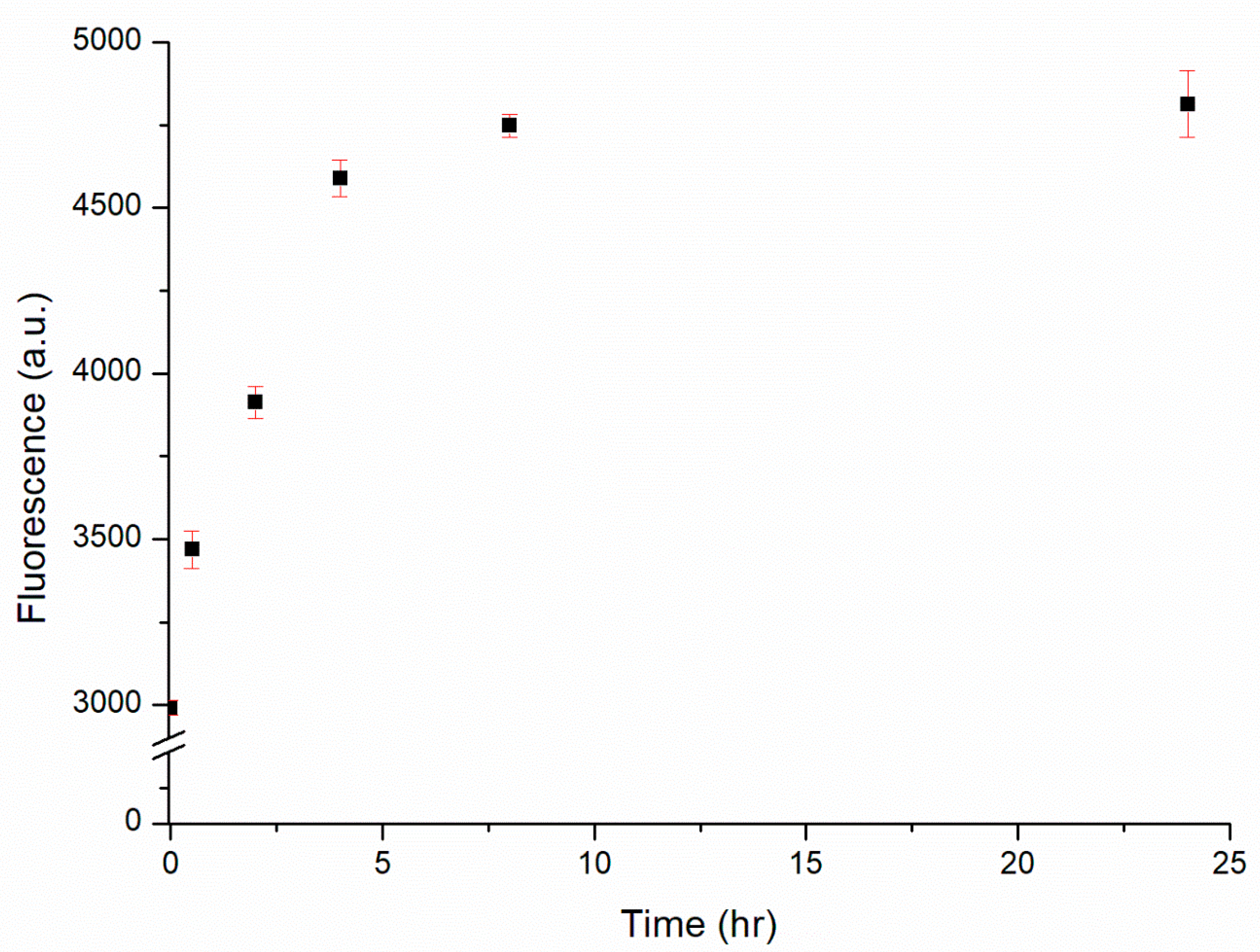

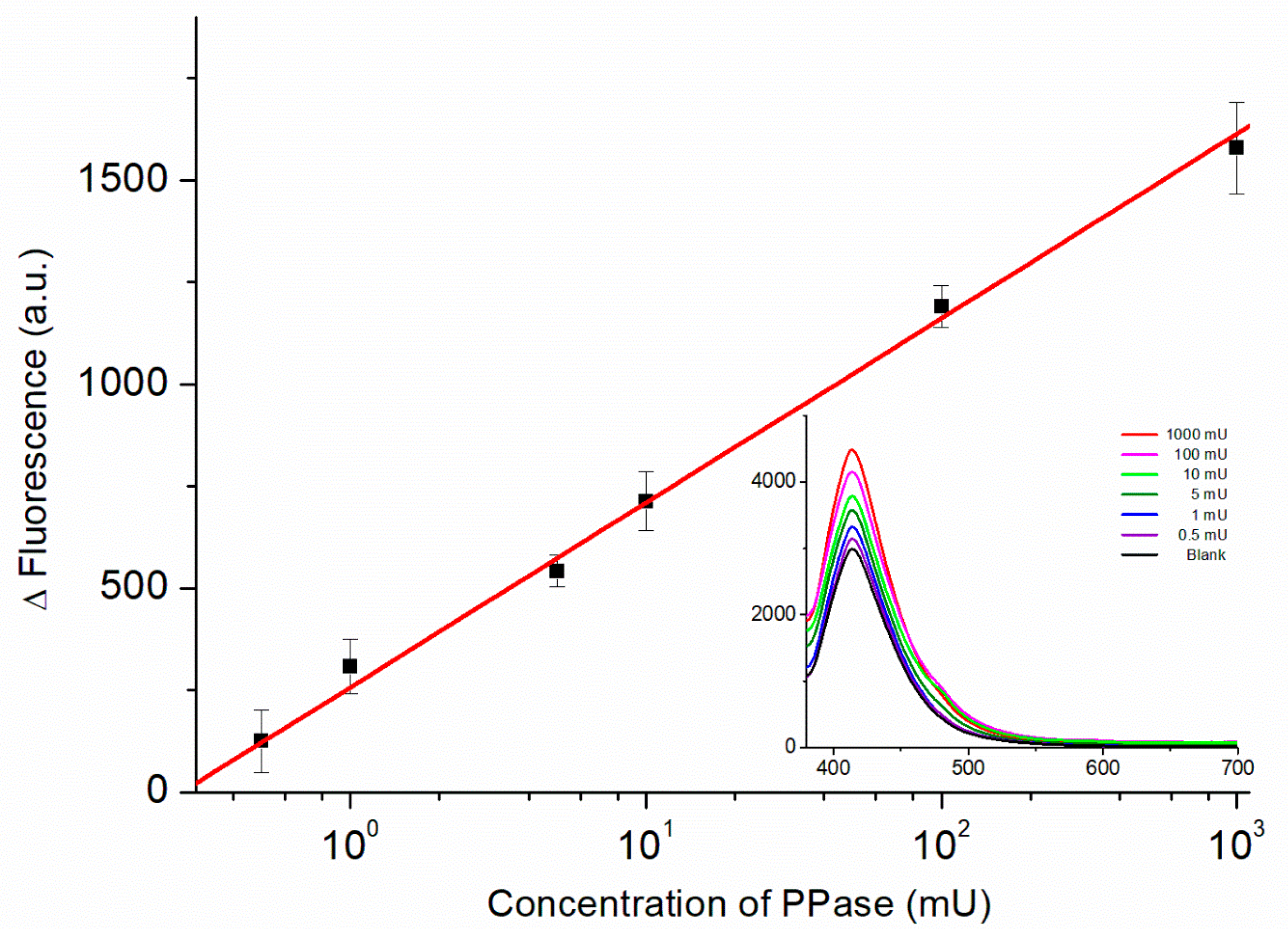
Publisher’s Note: MDPI stays neutral with regard to jurisdictional claims in published maps and institutional affiliations. |
© 2021 by the authors. Licensee MDPI, Basel, Switzerland. This article is an open access article distributed under the terms and conditions of the Creative Commons Attribution (CC BY) license (https://creativecommons.org/licenses/by/4.0/).
Share and Cite
Lee, C.-Y.; Liao, C.-H.; Fang, N.-M.; Hsieh, Y.-Z. DNAzyme-Amplified Label-Free Biosensor for the Simple and Sensitive Detection of Pyrophosphatase. Biosensors 2021, 11, 422. https://doi.org/10.3390/bios11110422
Lee C-Y, Liao C-H, Fang N-M, Hsieh Y-Z. DNAzyme-Amplified Label-Free Biosensor for the Simple and Sensitive Detection of Pyrophosphatase. Biosensors. 2021; 11(11):422. https://doi.org/10.3390/bios11110422
Chicago/Turabian StyleLee, Cheng-Yu, Chi-Hsiang Liao, Nei-Mei Fang, and You-Zung Hsieh. 2021. "DNAzyme-Amplified Label-Free Biosensor for the Simple and Sensitive Detection of Pyrophosphatase" Biosensors 11, no. 11: 422. https://doi.org/10.3390/bios11110422
APA StyleLee, C.-Y., Liao, C.-H., Fang, N.-M., & Hsieh, Y.-Z. (2021). DNAzyme-Amplified Label-Free Biosensor for the Simple and Sensitive Detection of Pyrophosphatase. Biosensors, 11(11), 422. https://doi.org/10.3390/bios11110422




